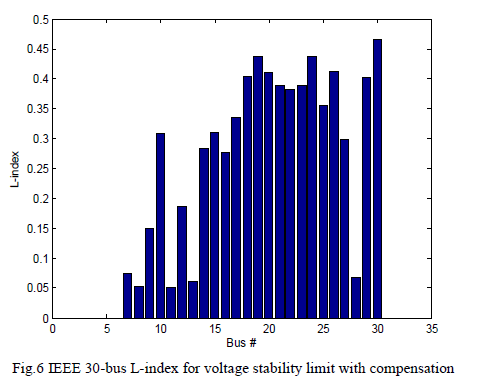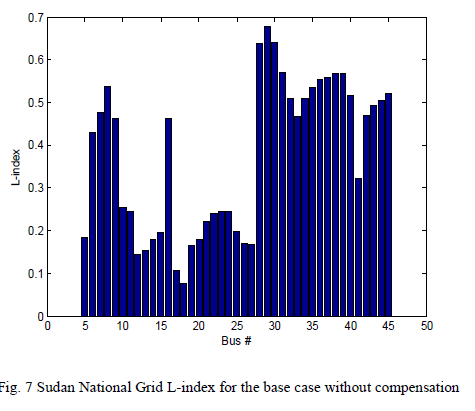ISSN ONLINE(2319-8753)PRINT(2347-6710)
ISSN ONLINE(2319-8753)PRINT(2347-6710)
Arathy Nair1, Mr.S.Kannan2, Dr.S.Karthik3
|
| Related article at Pubmed, Scholar Google |
Visit for more related articles at International Journal of Innovative Research in Science, Engineering and Technology
Mobile Ad hoc Network (MANET) are self created and self organized by a collection of mobile nodes Heterogeneous mobile ad hoc network consists of devices with heterogeneous characteristics in terms of transmission power, energy, and capacity. Large transmission range of the high power nodes leads to interference in the network which reduces the spatial utilization of the resources. Clustering scheme is used here where cluster head node will play the role of transmitting packet from one cluster to the other. Election of a Cluster Head (CH) within a local cluster structure is very important in setting up relatively stable cluster structure. But the problem is that the cluster head selection is based upon only shortest path Due to this strategy, the cluster head selection algorithm is not much effective. Hence the proposed algorithm for the cluster head selection includes the parameters such as battery power, transmission range, hop count and time to live(TTL) which can increase the throughput and channel space utilization of the network.
Index Terms |
| Heterogeneous mobile ad hoc networks, Clustering, LVC |
INTRODUCTION |
| Mobile ad hoc networks (MANETs) consist of mobile devices that form the wireless networks without any fixed infrastructure and the nodes are mobile. Each device in a MANET is free to move in any direction as the nodes are mobile and they can change their links dynamically. Mobile nodes can communicate each other directly, if they are in each other’s wireless links radio range. A Heterogeneous mobile ad hoc network is a network in which each device will be having heterogeneous characteristics in terms of energy, transmission power, capacity etc. Each device will be having different capacities and they will transmit data with different power levels. In a power heterogeneous MANET each node will be having different transmission power, some nodes will be having high power called high power nodes and some nodes will be having less power called low power nodes .The high power nodes have many advantages such as large transmission range compared to the low power nodes and also the coverage area is more for the high power node compared to the low power node. The main disadvantage of the high power node is that high interference will be developed due to the large transmission range |
| Clustering[1]-[4] is a method that aggregates nodes into group which helps improve routing at network layer by reducing the size of the routing table and in turn the transmission overhead which occurs due to the updation of routing tables will be reduced .The main advantage of the clustering is that the lifespan of the nodes will increase. The two main phases of the clustering is that the clustering set-up and the clustering maintenance .In the cluster setup phase, cluster heads will be choosen among all the nodes. The cluster heads acts as the coordinator in the group of nodes. The cluster heads will help in the delivery of the packets to the destination the second phase called the cluster maintenance in which the frequent re clustering is avoided. A loose virtual clustering[5] is introduced in this paper. Loose coupling means that the dependency between the nodes will be less compared to the strong coupling. Stability and reliability of cluster based approach depend on quality of cluster-heads and gateway nodes in the network. If quality of cluster-head is poor, performance of the network gets also degraded. Clustering makes possible hierarchical routing in which paths are recorded between cluster-heads instead of nodes. This reduces routing overheads. The presence of an unsteady and non reliable cluster-head decreases the performance of the network since cluster-heads of the network take active role in routing messages between a source destination pair. There are many algorithms for selecting the cluster heads in MANET. Some of them are Identifier based clustering, Degree based clustering, Energy based clustering. |
 |
| In this paper we propose an algorithm called modified loose-virtual-clustering algorithm which chooses the most reliable and stable node as cluster-head depending on the criteria’s i.e.transmission range[6], battery power[7] , hop count[8] and TTL of the node. It also uses a routing algorithm to generate load balanced routes between source and destination in cluster-based network. Better cluster stability, reduction in the number of clusters in the network, and improving the energy efficiency, throughput and channel space utilization of the network. |
RELATED WORK |
| There are a number of cluster head selection algorithms in MANET and also routing protocols for the power heterogeneous MANET. S.Muthuramalingam [6] proposes a Transmission Based Clustering For topology Control MANET. Author proposes a novel algorithm for clustering of nodes by transmission range based clustering (TRBC).This algorithm does topology management by the usage of coverage area of each node and power management based on mean transmission power within the context of wireless ad-hoc networks. Naveen Chauhan proposes, A Distributed Weighted Cluster Based Routing Protocol for MANETS. In these algorithm different parameters like battery power [7], node degree [8] and also the mobility is considered for selecting the cluster head. L.Villasenor proposes Hierarchical link state routing protocol [9]for power heterogeneous MANET, Here the mobile nodes are organized into group of clusters were the node capacity is considered for choosing the node as the cluster head. |
MODIFIED LVC ALGORITHM COMPONENTS |
| The modified LVC Algorithm contains two main components. The first component is the modified LVC algorithm which mainly eliminates the unidirectional links through the bidirectional neighbor discovery scheme and constructs the cluster and also selects the cluster head based on the parameters. The second components include the route discovery procedure and the route maintenance procedure. |
 |
| 3.1. Establish Mobile Ad hoc Networks |
| A Mobile Ad hoc network is simulated with minimum 30 numbers of nodes. Each node moves in the defined area with a selected speed [0, Vmax].There are two types of nodes in the network and they are the high power nodes and low power nodes. The high power nodes are known as the B nodes and the low power nodes are known as the G nodes. |
| 3.2 Modified LVC Algorithm |
| In the modified LVC algorithm, the hierarchical structure is created by eliminating the unidirectional links. |
| a. Bidirectional Neighbor Discovery Scheme |
| In the Bidirectional Neighbor Discovery scheme, each node sends a bidirectional neighbor discovery packet to another node. If the other node receives the packet. This node will send the acknowledgement to the node which has sent the Bidirectional Neighbor Discovery packet. The packet contains the node ID, state etc. Through this scheme, the unidirectional links will be eliminated and the bidirectional links will be established. Thus a hierarchical structure is created in the network. |
| b. LVC |
| In the modified LVC, high power nodes known as the B nodes will be chosen as the cluster head and will be having a loose coupling with the low power nodes ie the G nodes. Here only the G nodes under the coverage of B nodes will take part in the clustering, whereas the nodes which are not covered by the B nodes will not take part in the clustering. Two features appear in LVC. First, the loose clustering avoids overhead caused by reconstructing and maintaining the cluster when the number of B-nodes is small. Second, LRPH protocol can be adaptive to the density of B-nodes, even when all Gnodes are not in active state. |
| `c. LVC Maintenance |
| When links between nodes fail, the maintenance of LVC will be activated. In particular, when any node detects any of the following conditions based on the periodical Bidirectional Neighbor Discovery packets, it enters the procedure of LVC maintenance. When any node does not receive the Bidirectional Neighbor Discovery packet, then the LVC maintenance procedure is activated. d. Cluster Head Selection |
| The cluster head is selected upon the parameters such as the shortest path,ie the node which is having the shortest path to the low power node will be selected as the cluster head. Along with that the parameters such as Transmission range, Battery power, Hop count and TTL are considered for selecting the cluster head so that the selected cluster head will transmit the packets from the source to the destination therefore the network throughput and the channel space utilization increases. |
| 3.3. Routing components in modified LVC |
| The second component of the modified LVC algorithm includes the route discovery procedure which is used to find the route to the destination. The route maintenance procedure means any of the intermediate fails; the route maintenance procedure is activated to remove the broken link. |
| 3.3.1 Route Discovery Procedure |
| When the source node wants to send a packet to the destination,first the source node will check whether the route to the destination exists in the route cache or not .route cache contains the already existing routes .If the route to the destination does not exit in the route cache then the source node will activate the route discovery procedure to find the route to the destination. |
| 3.3.2 Route Maintenance Procedure |
| `When any of the nodes in the route fails then the route maintenance procedure is activated. A route error packet will be created along the reverse route to the source node. When the source node gets this packet then the node with the broken link will be removed and a new rout has to be discovered. |
CONCLUSION |
| In this paper the proposed method is based on clustering approach. This method selects stable and consistent cluster-heads. Clustering makes possible hierarchical routing in which paths are recorded between clusterheads instead of nodes. This reduces routing overheads. Presence of an unsteady and non-reliable cluster-head degrades the performance of the network since clusterheads of the network take active role in routing messages between a source destination pair. The proposed algorithm chooses the most reliable and stable node as cluster-head depending on the criteria’s i.e.: transmission rate, battery power, hop count and TTL of the node. It also uses a routing algorithm to generate load balanced routes between source and destination in cluster-based network, hence throughput and channel space utilization of the network increases. |